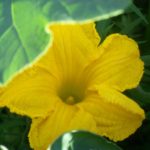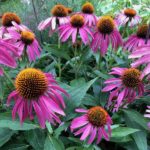.  Pattern Language Expands Possibilities
Pattern Language Expands Possibilities
What do forest gardens and peer run recovery centers have in common?
• Both are innovative ideas
• Both are phrases that help us envision new patterns and possibilities
As I expand on each one and you’ll see the connections.
On forest gardens
Forest gardens are also known as food forests or edible forests.(1) Recently, while in Helena, Montana I visited the future home of the city’s Forest Garden – a public partk with food producing trees and shrubs. Residents of Helena will be able to forage for pears, raspberries, plums, and currants. This is such a good idea that it is hard to understand why it took so long to think of it. Until now, the cultural norm for public parks and gardens has dictated planting non-edibles. As we look at the increasing lack of real food for many of our citizens it is time for a change. The phrase “a forest garden” creates the idea that a forest or park can be a place of sustenance and feed hungry community members.
On peer run recovery centers
Peer run recovery centers (3) highlight two ideas that would have been unthinkable not long ago. The first is the idea that people with a mental health condition could ever be well or recover. And the second is that those same individuals could be employed to help others. Peers helping peers has been an accepted practice in many other fields from cancer survivors to domestic violence to individuals with disabilities. But it took a little longer for the mental health field to catch up. There has been a dramatic shift in thinking and we now know that peers provide a powerful message of hope and a model of recovery for others.
Language alone did not create these innovative ideas, but naming them appropriately helps others understand them quickly and rally behind them.
A pattern language
The book, A Pattern Language, by Christopher Alexander is a detailed description of architectural ideas and solutions to creating livable cities and communities. It can be applied to many situations. My ideas about a pattern language are loosely drawn from his concept. A pattern language creates the words and phrases that help us see the larger picture and possible solutions to problems.
A pattern language includes:
-Having a sense of the positive outcomes we want to achieve: a healthy planet,
wellness, recovery, sustainability, availability of healthy food for all
-Paying attention to how all the parts of a system are connected.
For example: people are hungry and parks have lots of space to grow food or people who are living well with a mental health diagnosis probably have insights they can share with others
-Creating words and phrases that identify or suggest the solutions within them. This
is important. Language that creates a clear idea of solutions helps us stretch
toward that point.
Here is a mindfulness language game to try as we create a pattern language of sustainability and wellness:-
Identify some words and concepts that contribute to solutions of personal and planetary healing and are meaningful for you
-It doesn’t have to be complicated. Start with one word or phrase.
-Commit to talking with people about the idea and using it more in conversation.
Here is my short list of personal and planetary words:
-workplace mindfulness
-inter-species connectedness
-urban agriculture
-rooftop gardens
-unplugged day
-home cooked meals
-a 10+ vegetable day
-dinner and conversation with friends
-homes and gardens for all
-judgment free day
Please share your ideas for words and phrases that should be part of our pattern language.
Footnotes
(1)The word forest garden was first used by Robert A deJ. Hart in his 1996 book Forest Gardening. Another resource is Edible Forest Gardens by Dave Jacke and Eric Toensmeier.
(2)A number of cities are planning Forest Gardens. Click here for a link to an article on Helena’s Forest Garden
(3) See the National Empowerment Center’s website for more information on peer run centers



Forest garden. Cool. Love the idea!
It is amazing to think that “public gardens” have not fed anyone before! When we design our home gardens often there is a lovely composite of both decorative and edible gardens. Forest gardens sound like they are just the tip of the iceberg for creating sustainability and feeding those in need. Brilliant!
Can’t wait to read next months article!